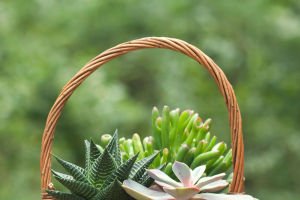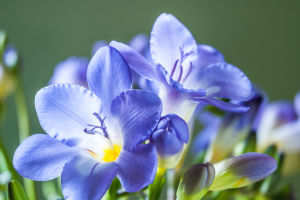Mint can be found everywhere in our daily lives. It is a fragrance, a medicine, a vegetable, and a flower. Unknowingly, this small grass, which is ubiquitous, has become our good friend in the summer.
Mint is a perennial herb of the genus Mentha in the family Lamiaceae. It is mostly found in the wild and widely distributed in the northern hemisphere, in temperate and subtropical regions. West Asia, the Mediterranean coast, South Asia, and many countries in Southeast Asia are rich in mint.
Its stem is square-shaped, with the main stem usually erect and upright. The lower nodes have slender fibrous roots, and horizontally growing stoloniferous rhizomes. The leaves are opposite and oval. The very small flowers bloom in late summer and can be red, white, or purple. After flowering, it bears tiny dark brown fruits.
Mint is a hardy plant and can be found in the wild every summer, whether in the wilderness or ponds and marshes. Its roots are hardy, making it highly adaptable to temperature variations. It can grow quickly in hot environments and safely overwinter in cold temperatures through rootstock lodging. Its optimal growth temperature is between 25°C and 30°C. Mint does not require a highly specific soil environment. As long as the soil is not too acidic or too alkaline, it can be cultivated well. Sandy soil and river-impact soil are particularly suitable.
This plant thrives in light and sunlight, which promotes mint growth, and flowering, and facilitates the formation of menthol. Therefore, to have green and fragrant mint, it is best to keep it in a warm, moist, and sunny place.
Usually, people recognize mint mainly by its leaves and flavor. Mint leaves have a very distinctive appearance. They are bright green, opposite in arrangement, and densely clustered, giving them a vibrant and bright appearance. On closer inspection, each leaf is approximately 3 to 5 cm long and 0.8 to 3 cm wide, making them of moderate size.
The leaves are mostly elliptic, ovate, or oblong-lanceolate, with an acute front end and a cuneate to subrounded base. The edges of the leaves have coarse, tooth-like serrations, and the center of the leaf has a distinct midrib and five or six pairs of lateral veins, giving the entire leaf a bumpy effect that looks exquisite and lovely.
Each herb in nature emits a unique aroma, and the scent of mint brings a refreshing sense of coolness. When you pick a mint leaf and place it under your nose, you will immediately feel refreshed, clear-headed, and cooled off. There are at least 600 varieties of mint around the world. This is mainly due to its wide distribution and adaptability, as well as its ability to successfully crossbreed in its natural environment.
Mint can be classified in various ways. Some are distinguished by the color of the stem, usually divided into two categories: green stem mint and purple stem mint, with purple stem mint often having a stronger fragrance than green stem mint. Others are classified by origin, such as Scottish mint, American mint, Vietnamese mint, Japanese mint, and so on.
Due to the wide distribution and diversity of mint worldwide, scholars have two views on its origin. Some believe that mint is a native Chinese plant, while others think it is an imported product that was first cultivated in the Mediterranean and Western Asia.
The ancient Greeks and Romans were already familiar with its use. Ancient Europeans would often put mint leaves in their bathwater to cool, refresh, and nourish their skin. People also wore garlands made of mint during festivals and celebrations to enjoy its pleasant aroma. In addition to its aromatic qualities, mint has been widely recognized for its medicinal properties. It has been used for centuries in traditional medicine to treat various ailments. Mint leaves are known to have a cooling effect and can soothe indigestion and gastrointestinal issues.
The menthol present in mint helps to alleviate symptoms of cough and congestion, making it a common ingredient in cough drops and throat lozenges. Mint oil is also used in aromatherapy for its relaxing and invigorating effects on the mind and body.
Mint is a versatile and widely appreciated herb that serves many purposes in our daily lives. Whether enjoyed for its fragrance, used medicinally, added to culinary creations, or incorporated into personal care products, mint continues to captivate our senses and offer its refreshing qualities.
Its ubiquity and adaptability have made it a cherished companion during the summer months and beyond.


